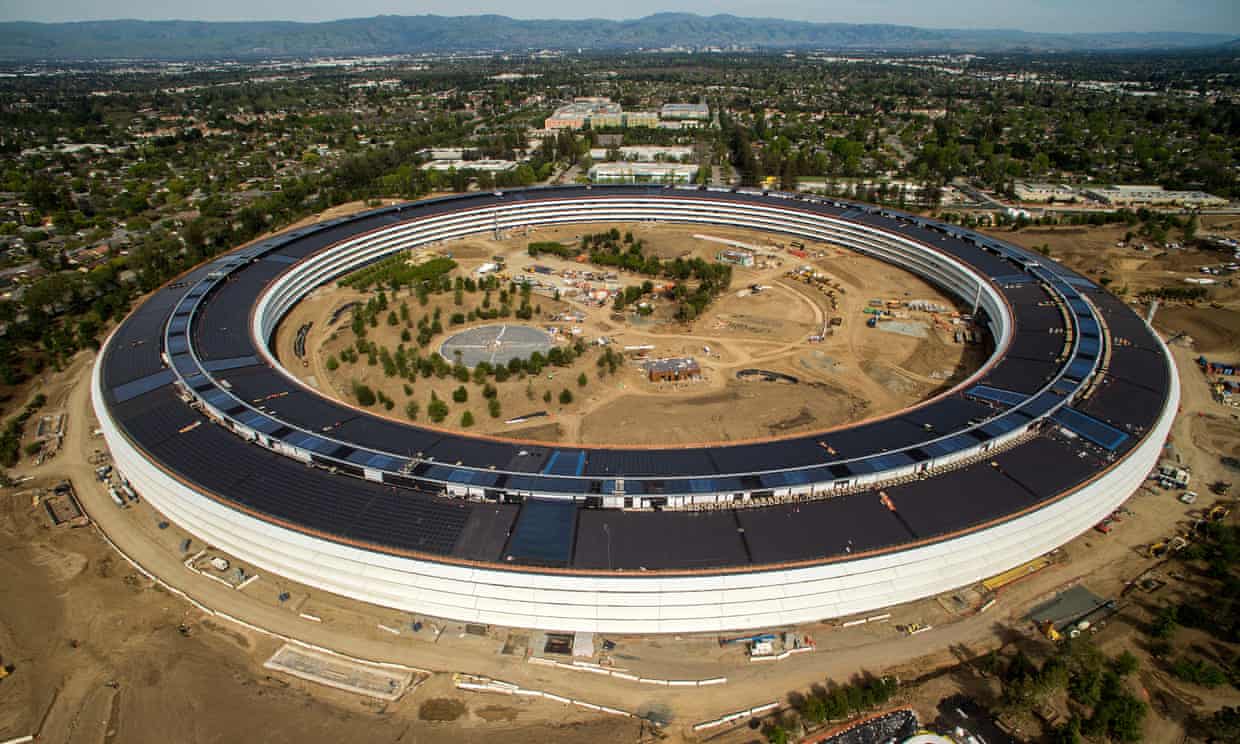by ROWAN MOORE
 The completed Apple Park in Cupertino, California, which opened in April 2017. PHOTO/Alamy
The completed Apple Park in Cupertino, California, which opened in April 2017. PHOTO/Alamy
From California to London, the tech giants are employing top architects to build spectacular symbols of their immense global power. But they have their critics…
We know by now that the internet is a giant playpen, a landscape of toys, distractions and instant gratification, of chirps and squeaks and bright, shiny things – plus, to be sure, ugly, horrid beasties lurking in all the softness – apparently without horizon. Graphics – rounded corners, lower case, Google’s primary colours, Twitter’s birdie, Facebook’s shades of blue – enhance the innocence and infantilism. It is a world, as Jonathan Franzen once said, “so responsive to our wishes as to be, effectively, a mere extension of the self”. Until we chance on the bars of the playpen and find that there are places we can’t go and that it is in the gift of the grown-ups on the other side to set or move the limits to our freedom.
We’re talking here of virtual space. But those grown-ups, the tech giants, Apple, Facebook, Google and the rest, are also in the business of building physical billion-dollar enclaves for their thousands of employees. Here too they create calibrated lands of fun, wherein staff offer their lives, body and soul, day and night, in return for gyms, Olympic-sized swimming pools, climbing walls, basketball courts, running tracks and hiking trails, indoor football pitches, massage rooms and hanging gardens, performance venues, amiable art and lovable graphics. They have been doing this for a while – what is changing is the sheer scale and extravagance of these places.
For the tech giants are now in the same position as great powers in the past – the bankers of the Italian Renaissance, the skyscraper-builders of the 20th century, the Emperor Augustus, Victorian railway companies – whereby, whether they want to or not, their size and wealth find expression in spectacular architecture. As Deyan Sudjic, formerly of this parish and now director of the Design Museum, wrote in his book The Edifice Complex, the execution of architecture “has always been at the discretion of those with their hands on the levers of power”. Having as much sense of their own importance as those previous powers, tech companies probably don’t mind commissioning structures that define their time.
A clue to their ambitions lies in their choice of architects, who are at the very to extremely famous end of the professional spectrum. They have, plainly, colossal resources, with the ability to do almost anything they like. They can have new materials invented, or make old ones perform as never before. They can build the biggest and most expensive workplaces yet seen. They can change cities. They have already redefined “architecture” in the sense that the word can now refer to the structures of software and hardware. Now the old-fashioned version of architecture finds itself an adjunct of the new sort. One sign of the shifted balance of power is the fact that Apple, having commissioned the mighty Foster and Partners to design its new HQ, chose not to name them even after they had unveiled the plans. The project is still not on the Foster website. The Apple brand had to come first.
Guardian for more
